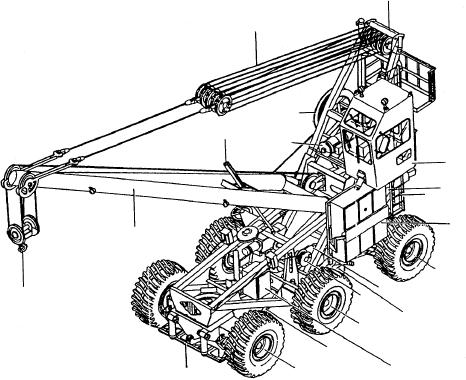
CHAPTER 13
SHIPBOARD FLIGHT DECK EQUIPMENT
familiar with its dependability rates and know the
INTRODUCTIOIN
peculiars of its periodic maintenance procedures.
One of the main concerns of a shop crew is to
For specific operation or maintenance procedures,
ensure that aircraft launch support equipment (SE) and
refer to the technical manual for the equipment you are
aircraft crash and fire-fighting equipment are fully
studying.
operational at all times. Most senior aviation support
equipment technicians will agree that marginal
AMPHIBIOUS ASSAULT SHIP CRASH
operating performance for a piece of crash and
CRANE (AACC)
fire-fighting SE will not only jeopardize the ship's
mission as a man-of-war, but will cause havoc on the
LEARNING OBJECTIVES: Recognize the
scheduled maintenance plan for the in-port periods.
purpose for crash cranes. Identify the
This becomes obvious when you consider these basic
components of crash cranes. Identify proce-
rules: An aircraft carrier cannot launch nor recover
dures for troubleshooting and maintenance of
aircraft if the aircraft crash crane is inoperative; a major
crash cranes.
weapons system cannot be launched if the crash sling
Crash cranes are used for lifting and removing
for that aircraft is inoperative; and all flight deck
crashed or damaged aircraft from the flight deck
operations are handicapped if the fire-fighting
landing and launch areas. These cranes are
equipment is not available for quick response.
self-propelled, with four individually driven wheels for
Since all aircraft crash and fire-fighting equipment
high maneuverability. The cranes do not directly attach
must be fully operational during flight operations, the
to the aircraft, but use slings. Some aircraft slings are
scheduled maintenance and minor discrepancy repairs
made for particular types of aircraft. Other slings are
required to maintain this equipment must be scheduled
universal; that is, not made for any particular aircraft.
during non-flight periods. Generally speaking, these
The two types of aircraft crash cranes used aboard
occur during in-port periods. With this in mind, it is
ship are the A/S32A-36A amphibious assault crash
important that you understand the operating
crane (AACC), shown in figure 13-1, and the
characteristics of support equipment. You should be
MAST
LUFF LINE
HOIST AND
LUFF DRUMS
BOOM
STOP
HOIST AND
LUFF MOTOR
CAB
OIL RESERVOIR
ENGINE ACOUSTICAL
ENCLOSURE
MOTOR DRIVE
BOOM
CABINET
REAR DRIVE
STEERING
DRIVE MOTORS
MAIN HOOK
TAGLINE
BLOCK
DRUMS
FUEL TANK
INTERMEDIATE
DRIVE AXLE
STEERING
DRAGLINKS
PENDANT
FRONT
INRIGGER
CONTROL
STEERING
BOX
AXLE
ASf13001
Figure 13-1.--A/S32A-36A amphibious assault crash crane (AACC).
13-1

